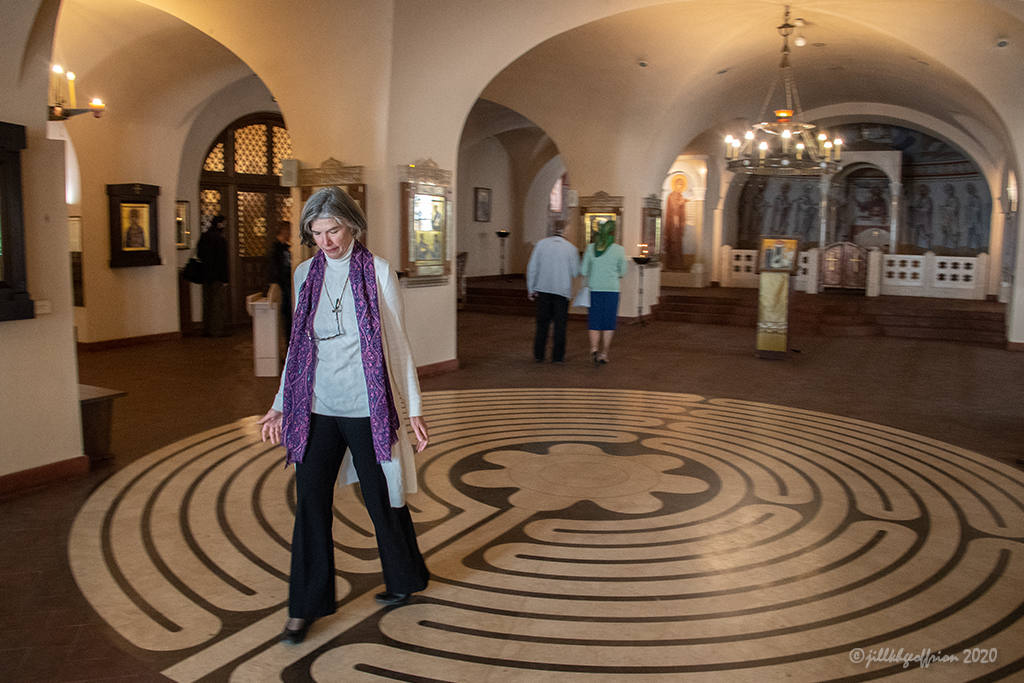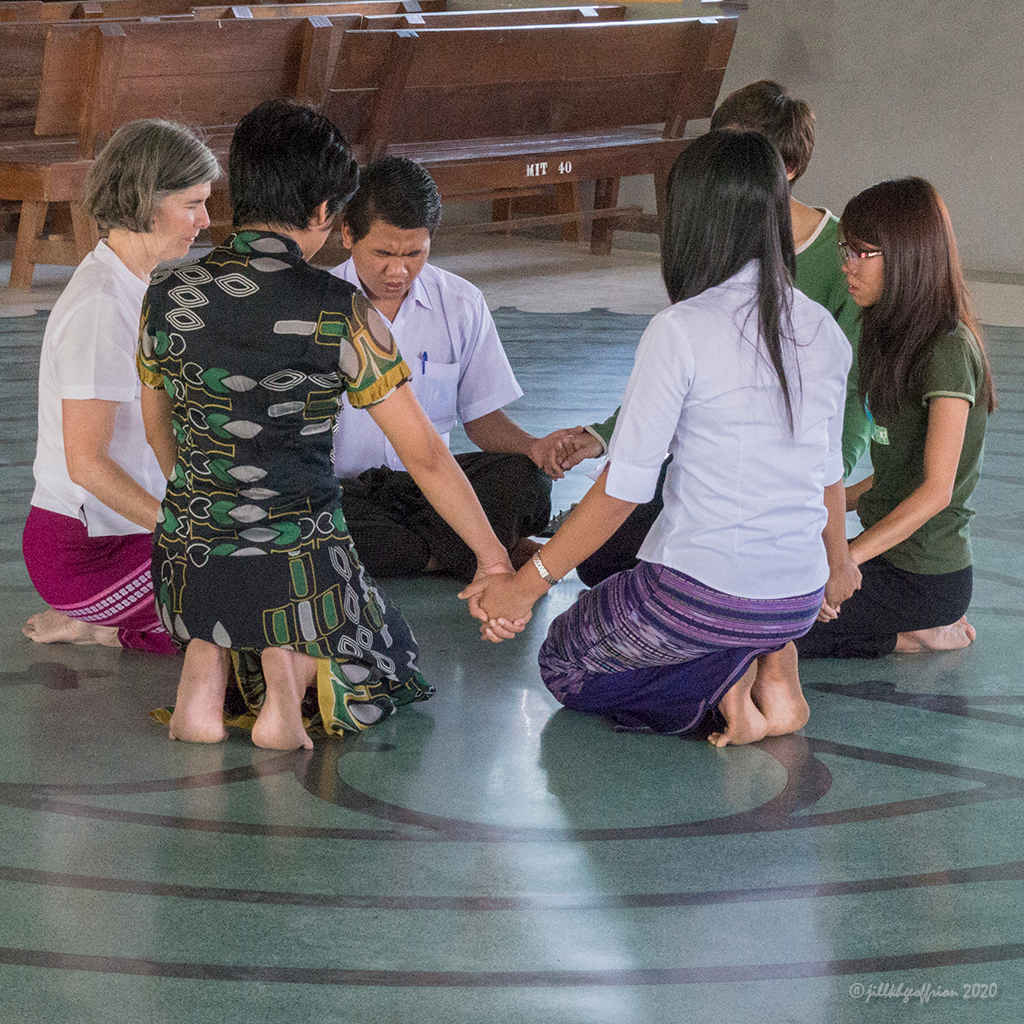Why Do I Pray the Labyrinth?
Given all the ways to pray, why do I choose to use the labyrinth so frequently? The joy; it’s that simple. Not that all experiences of praying the labyrinth are joyful, I have wept profoundly as I poured out my pain to God on the path. But the labyrinth doesn’t seem to be a place where my prayer gets lost in sorrow, details, or holding on to preconceived notions of what I want or need. As I move along the path, whether with my feet, my eyes, my knees, or my fingers, I am often aware of God’s compassionate presence with me. That is the essence of my joy, something I am always ready to experience!
“Thank You!” is the prayer phrase that I find myself using most often as I move on labyrinths. Springing from the soil of my labyrinth encounters, it is my deepest and most spontaneous message to God. Oddly enough, this “Thank You” is not something I set out to communicate. I am not aware of it being for anything specific. But time and time again I find myself on the labyrinth with profound gratitude oozing from my being.

Silence and stillness call to me powerfully. Unfortunately, my desire to pray meditatively and my ability to pray quietly without moving are not equally matched! Yetas I engage the labyrinth pattern with my body I am able to enter the deeper realms of spiritual connection almost effortlessly. We do not expect the delights of faith to be accessed so easily, yet they are when using labyrinths.
At times structure aids my praying. Sometimes I need spontaneity’s gifts to lead me towards God. The labyrinth can support both these forms. When structure is called for, the path with its singular route to and from the center awaits. Yet I never feel bound to use the labyrinth in only one prescribed way. When grieving for my father-in-law who had died suddenly, I moved directly to the center and sat there until I was ready to get up and move directly out. Sometimes I walk around and around the labyrinth, or just sit near it as I commune with Spirit. I feel drawn to God when I am in the presence of a labyrinth, that profound truth is my invitation to continuing prayer on labyrinth pathways.
Should prayer be beautiful? My artist’s heart beats faster at the possibility. My awe of labyrinths as spiritual tools includes deep appreciation for the ways in which they allow beauty and prayer to come together. The sacred possibilities of beauty are not only visible as one looks at labyrinth patterns, they are also visceral as one encounters them with her or his entire body.
The centering effect of labyrinth praying aids me in opening my mind and heart to the day’s best possibilities, that’s why I often pray a labyrinth before beginning my work day. As a retreat leader and spiritual guide I have come to trust the labyrinth as a spiritual prayer tool. I am not surprised by the ways in which the labyrinth opens the flood-gates of creativity in those who use it, but I have never gotten used to the magnitude of the creative energy that is unleashed by the use of this prayer tool. It is nothing less than astounding!
Jesus’ presence with me on the labyrinth has comforted, surprised, challenged and supported me. Like Jesus’ disciples on the road to Emmaus (Luke 24:13-32), my heart often burns within me as I walk a labyrinth with the risen Christ, pouring out my heart, and listening to the wisdom that is given through God’s Spirit. Although there is no mention of a labyrinth in the Bible, the scriptural image of Jesus being the Way has taken on a fuller meaning as I have come to know the labyrinth path-way more intimately.
Given all the ways to pray, why do I choose to use the labyrinth so frequently? The joy, gratitude, deep spiritual knowing, beauty, creativity, love and experience of Jesus’ presence there all call me to the path. Whatever your need, I hope that you too will pray the labyrinth and experience all the gifts God has for you.
From: Christian Prayer and Labyrinths: Pathways to Faith, Hope and Love (Cincinnati: Pilgrim Press, 2004).

